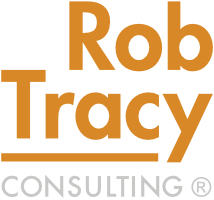Lean and Continuous Improvement initiatives often have a predictable and disappointing start. Tools are implemented like Gemba walks, tier boards, and 5S, and there appears to be positive change, but 12 months later the changes are not reading out in meaningful ways. This is usually a symptom of starting in the wrong place. The right place to start in your organization is at the intersection of the customer’s needs and your organization’s competency. This is critical to a successful improvement initiative.
Regardless of the tools you use: EOS, Lean, 6-Sigma, Automation – you must be crystal clear about your value proposition to your customers. Lean calls it Voice of the Customer and EOS™ weaves it in with the 3-uniques. In all cases, it clarifies what the company defines as “The key things that our target customers consider important”.
Toyota produces automobiles known for quality and reliability. LSI makes “Fun” in a fast-paced, high mix/low volume environment, well-known for innovation and short lead times. Both companies have benefited from being clear about where they add value on how that value intersects with their improvement journey.
Toyota – Quality and Reliability – Beginning with stabilizing and standardizing
Toyota did not always have the reputation that they have today. In the late 1940’s Toyota determined that by reducing overburden, inconsistency, and waste they would be able to deliver a better car. So, that is where they started their journey. Over the years they developed what is now known as the Toyota Production System. The tools and ideas developed at Toyota include level production schedules, empowered employees, takt time, standard work, and just in time inventory. Toyota studied their business, identified the key problems that were impacting results, and set off to eliminate them. Toyota was clear with regard to what needed to change and developed the system and leaders to make that happen.
Landscape Structures – Innovation and Speed – Beginning with flexibility and velocity
Landscape Structures is THE innovator in the playground design and manufacturing space. LSI has an enterprise-wide Continuous Improvement culture rooted in speed and flexibility. As with Toyota, this was not always the case. Customers were constantly demanding new designs and colors, and shorter lead times. LSI’s manufacturing system was designed around large batch sizes and a growing finished goods inventory waiting to be picked for shipping.
The leadership team embarked on a strategy to reduce lead time and increase flexibility in the production system. LSI started by aligning their value streams, reducing batch size, and eliminating changeover time on all equipment. By focusing on the reduction of batch sizes and set up reduction, LSI was able to meet the needs of their customers, and their production system supported their goals of innovation and speed.
LSI and Toyota are different companies that have very different value propositions. Toyota invented the system that LSI used as a reference. LSI needed a production system that could handle variability in both demand and product mix, while Toyota required a production system that was level and eliminated variation to drive improvements in quality and reliability. Naturally, they started their journeys with differing focus areas.
Every improvement journey has a starting point. I challenge you to take your time to insure you choose the right place to start. If you focus on implementing canned lean tools and do what so many others have done, you are likely to be disappointed. It is critically important that you understand what your customers value, understand how you create that value, and relentlessly improve the processes that support those value drivers.
Remember, your company has a unique value proposition, which means your approach to CI must be unique as well.
Joe Molesky is the VP of Operations at MultiSource Manufacturing. Over his 20 year career, Joe has led Operations teams in both Field Service and Manufacturing. Joe has an MBA from Saint Cloud State University and is a former board member with the North Central Chapter of AME, and Functional Industries. Joe enjoys speaking on the topics of Leadership and Change Management.
